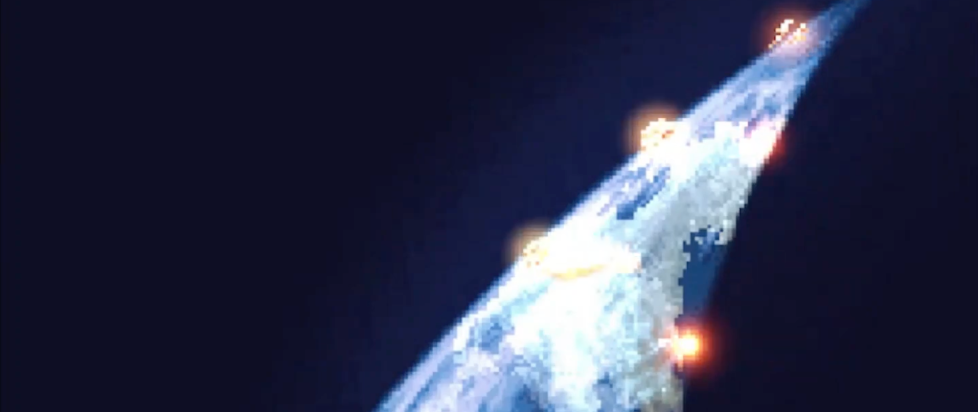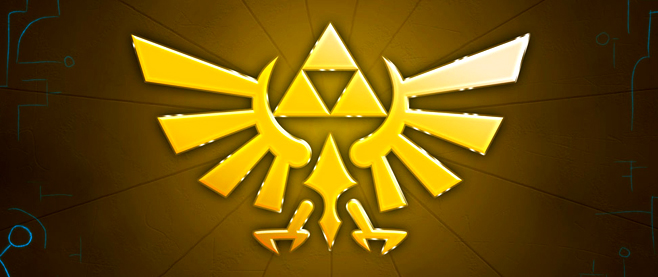
Final Fantasy, Zelda, and Gradients of Apocalypse
A once-thriving world flooded beneath a vast ocean. A dense metropolis destroyed by a colossal meteor. A crumbling world decaying into madness and despair. Videogames are littered with apocalyptic narratives. If the main thrust of the story doesn’t involve an encroaching global disaster, there’s a decent chance it’ll be set in the ruins of one. Typically, these world-changing events will either occur at the very end of a game’s story, or are recounted through exposition-heavy flashbacks. Games like Dark Souls give the player agency as to what trajectory the dying world will take, either burning it down to make way for a new one, or withering away into darkness – though the results of this decision are left largely to the imagination. Games typically present us with a mere snapshot taken from a cycle of peace, conflict, disaster and eventual rebirth. The act of actually representing the transition between these states in game is, however, a massive challenge, and far more rare. Trying to encapsulate both pre- and post-apocalypse, with all that would entail for the societies with which you’ve been interacting, and the ecosystems through which you’ve been traversing is no mean feat. Two long-running series – Final Fantasy and the Legend of Zelda – have, however, attempted to do just that, taking very different approaches in the process.
Themes of planetary destruction and rebirth pop up time and again in the Final Fantasy series. The entirety of Final Fantasy X’s Spira is stuck in an eternal cycle of destruction and rebirth, the scars of which are evident as craters and fissures littering the landscape, but again, we as players will only ever witness a small snapshot of this cycle directly. We see a more explicit representation of these ideas by contrasting the 6th and 7th entries. The world of Gaia enters a tipping point halfway through the events of Final Fantasy VII. Meteor is summoned by Sephiroth and looms large on the horizon for the remainder of the game, a slow funereal dirge replacing the bright, adventurous main theme on the world map. While this sets an ominous tone, it doesn’t change much about the act of navigating the game itself, and we never actually see the fate of the main cast play out in-game following its impact. The far more interesting shift is seen in the game’s epilogue. After the credits, we are presented with the words “500 years later”, and a short scene in which Red XIII, one of a long-lived leonine species, overlooks the ruins of the megacity Midgar, completely overgrown and verdant. This ambiguous end to the game is one of its most interesting characteristics, and the suggestion that the persistence of life is a victory, even it isn’t in the form of human civilization, is a perfect encapsulation of the game’s environmental themes (even if this potency of this ending is rendered a little inert and irrelevant by the game’s extended universe sequels and spin-offs).
This game’s predecessor, Final Fantasy VI, took a different approach. As might be expected for your standard JRPG, we gather our band of heroes and traverse a deadly and difficult dungeon to stop the game’s maniacal villain Kefka. However, we fail – Kefka succeeds in his plan, and most of the world is utterly destroyed, entire towns lost. Green fields are replaced with barren wasteland, and depending on the player’s actions, party members can be permanently killed. The entire geography of the planet changes, and while there is much new to explore in this changed world, the old one will never be revisited. We explore, initially alone, and search for our old friends, seeing what scraps they, and the remnants of society, are able to put together in this new age, what new meaning they can find in the ruins, be it running an orphanage, or even giving in to despondency and joining the cult of Kefka himself. One of the reasons FFVI is one of the most beloved entries in the franchise is because it bridges the gap between peace, ruin, and what comes after with depth and at times an unflinching bleakness, presenting the contrast between balance and desolation in a remarkably even-handed way that is perhaps only rivaled by its contemporary Chrono Trigger. A similar trick was attempted with Final Fantasy XV in 2016, but like much of that game, it does not hold up well to comparison, offering but a small chunk of a ruined world to explore, and fundamentally undercut by the ability to “return to your memories”, i.e. time travel at will, which somewhat dampened the impact of the apocalypse.

These themes would take on a newly meta-textual significance with the advent of Final Fantasy XIV. The MMORPG was derided at its initial launch in 2010, and deemed a huge failure by critics and Square Enix themselves. Rather than shuttering the game though, they instead reworked the entire mechanics to make it one of the most popular games on the planet. What makes this transition fascinating though is how it was weaved into the story of the game itself. At the end of the original game’s story, the great dragon Bahamut was laying waste to the world, unable to be stopped despite the best efforts of the world’s armies. The 2013 relaunch, fittingly titled A Realm Reborn takes place in the society that was established many years after the world’s ruin, and the entire story and setting of the game is set against the backdrop of that initial calamity. The initial game and all its contents are now inaccessible, reinforcing the sense of complete loss and obliteration of that old world – even if it was purely for reasons of corporate financial necessity.
Another long-running and much-beloved series, The Legend of Zelda, has taken a wholly different, and more consistently successful approach. 1998’s Ocarina of Time allows Link to freely travel between the peaceful, halcyon days of Hyrule, to a ruined world destroyed by Ganondorf. The world explored by Link as a child must be rediscovered with a new narrative and mechanical context (the most immediate example of which, when Link awakens as an adult seven years in the future, is the replacement of Castle Town’s inhabitants with shrieking zombies). Despite time travel being available for much of the game, the constant contrast between the old world and the new means the tragedy of Hyrule’s destruction doesn’t lose its impact as it does in Final Fantasy XV. While these themes are successfully explored in this game, the real success of the Zelda series is its use of a vague shared history across games.
The manual of the very first Legend of Zelda game, in its brief few paragraphs of story and setting, refers to legends being handed down from generation to generation. This concept would be fleshed out more fully in subsequent games, each hero a descendant or ancestor of a different Link , who must take up the mantle of hero, as well as the legendary Master Sword, once again. So far, this is the backdrop for a fairly standard fantasy narrative, and in each case Link will face and defeat some great evil (usually Ganon), peace will be restored and the game ends. Looking beyond the surface, however, these connections across time are more interesting than they first appear.
2002’s Wind Waker is set on a wide, explorable ocean, dotted with small islands and simple settlements, the events of the Ocarina of Time are retold as a near-forgotten legend at the game’s opening As the story progresses, Link ventures down into the depths and finds the long-forgotten Hyrule Castle from that old tale, now hundreds of years old. The entirety of the old Hyrule was flooded, completely destroyed, in order to seal Ganon away. The Wind Waker is rarely described as a post-apocalyptic game, but that’s essentially what it is – it’s just executed in a smart and subtle way that imagines a future which can be bright and new, rather than bleak and barren, while relying in part on our memories of worlds previously explored.

This connection is an example of how Zelda is able to pull off a neat trick that few other games manage, or are even capable of. Its games are connected by just enough narrative connective tissue that we recognize and connect to these old, destroyed worlds, but not too much so as to demand precise narrative consistency across dozens of games. They’re able to have their cake and eat it too, exploring both worlds on the brink of annihilation, as in Majora’s Mask, and the post-apocalyptic peacefulness of Breath of the Wild, with it all still feeling like a consistent location. Connections span generations and across the collapse and rebuilding of societies, but they always just about survive. This is an element of the series which has only become more effective as time passes, and Breath of the Wild in particular capitalizes on it in a masterful way. Being set 100 years after an apocalyptic battle (and 10,000 years after an even older conflict), much of the game is spent exploring the ruins of Hyrule. As we explore the ruins of the old world, familiar locations are stumbled upon, barely recognizable but still there. Musical motifs deeply ingrained in the player’s mind quietly break through the minimalist score, only to fade away again after a few bars. As we explore, we speak to and connect with villagers and wanderers trying to make their way in this desolate land, and in one of the game’s most memorable quests, we gradually bring people from across the world to start a new society, each of them bringing some element of their hometown, a surviving piece of their culture from the old world, and together (and with your help) they build something new.
Both Zelda and Final Fantasy are over 30 years old now, and while both series have innovated throughout their history, they both often revisit grand, world-altering narratives, and attempt to explore the impact of these changes on the communities we encounter. The Final Fantasy series gives us glimpses of worlds and societies facing and recovering from global catastrophe, but perhaps as a result of the absence of a consistent narrative across games, it is limited in how much it can actually show us. Hyrule, on the other hand, is a world that is being constantly burned down and reborn, at once recognizable and inviting, yet always with the promise of something new.
———
Jonathan is a biological researcher by day, but spends much of the rest of his time obsessing over games, music and music in games. You can follow him on Twitter @JayPeaFenn





